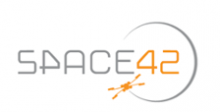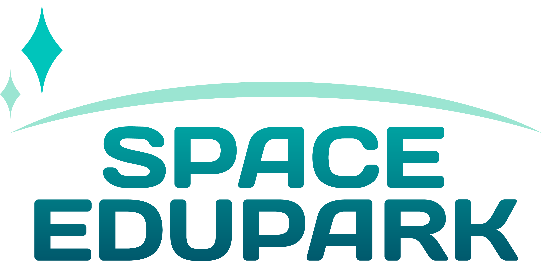
Objectives of the service
The Space EduPark platofrm offers Teachers, Students and Headmasters an innovative and gamified E-Learning framework based on Space assets and Augmented & Virtual Reality experiences. The system has been designed to support the study of Earth Sciences and, more in general, STEM related topics. The pilot application has been implemented through a complete course on Cryosphere which makes massive use of ESA Materials for Earth Observation. The aim is to bring students of “secondary school first grade” to discover our planet in the way that satellites do: a unique – beautiful and fragile – planet that works as a complex system driven by the interaction of all its natural and anthropic components.
We believe Education is a key pillar of a healthy society: remote Education, empowered by digital technology, has helped tackling the Covid-19 crisis but, more importantly, has shown to be a laudable investment for the future to complement and integrate on site Education.
In the era of the Covid-19, students from different part of the world, but especially Italian ones, had started their first experiences with digital education, often with very low results in terms of engagement and learning achievements. The service we propose - deployed and tested in Italy - has been designed to respond to this gap. It is not just a short-term project, but a longer-term initiative to create benefits in terms of better and more engaging remote learning opportunities. The idea behind Space Edu Park is to build a framework to provide support for schools and teachers in innovating the educational model, integrating effective and appealing distance learning solutions. At the same time, this has an impact on students’ learning processes, by enhancing the emotional and cognitive dimensions, as well as boosting social aggregation.
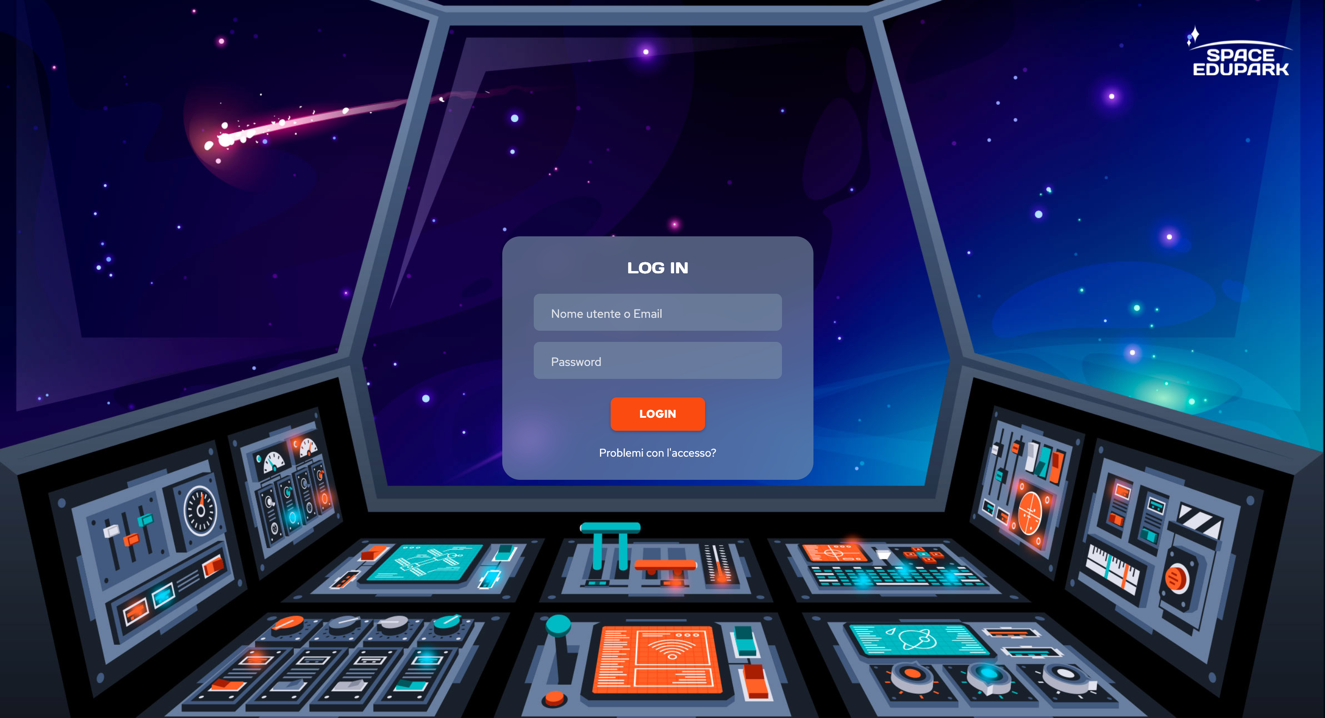
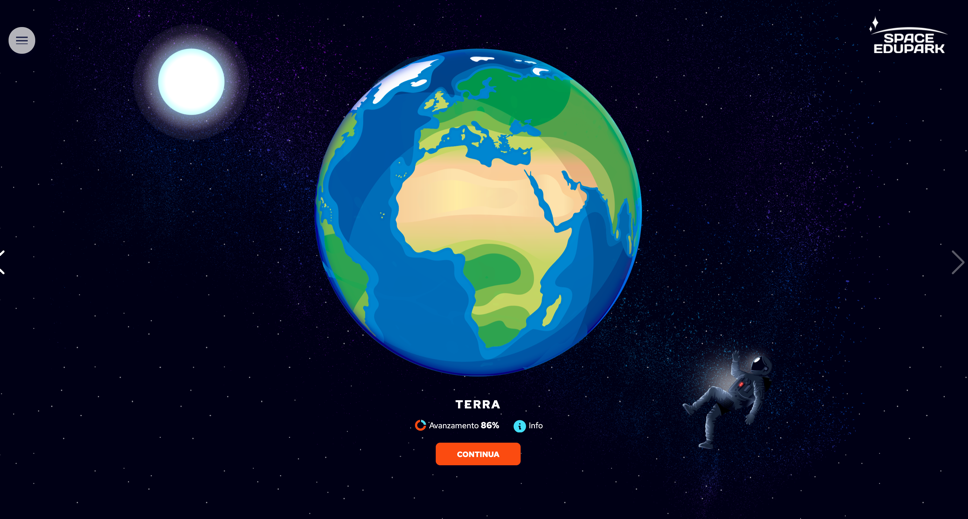
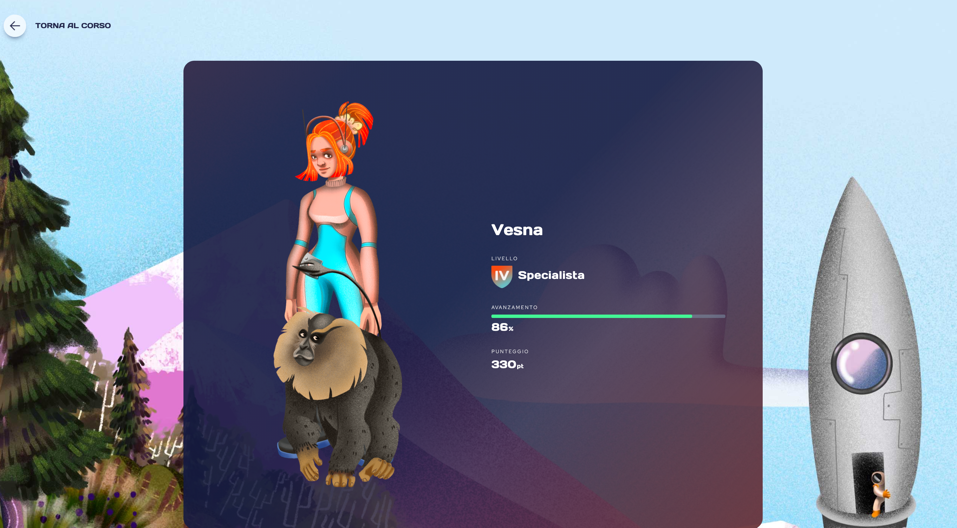
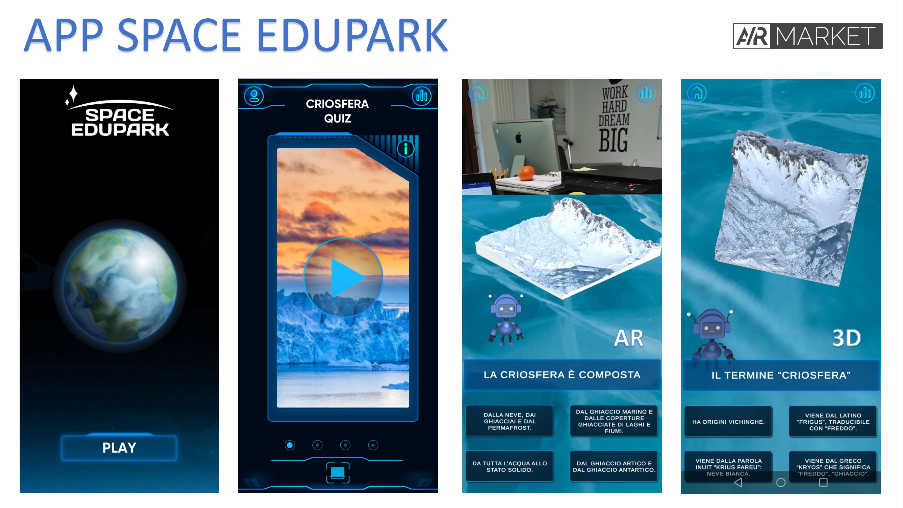
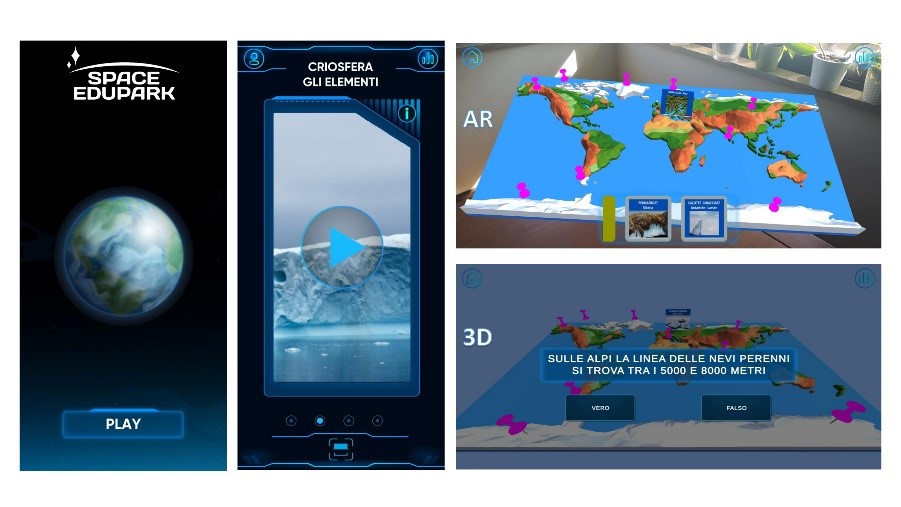
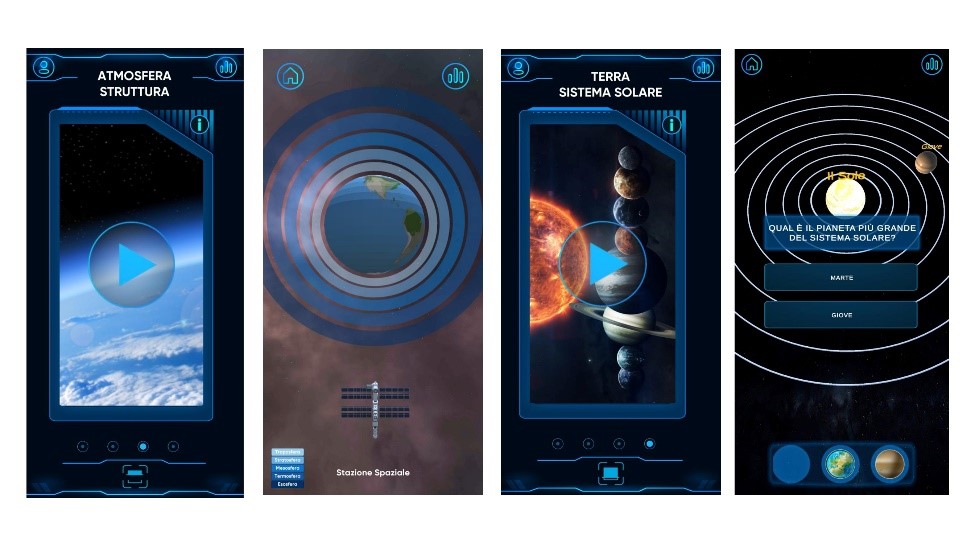

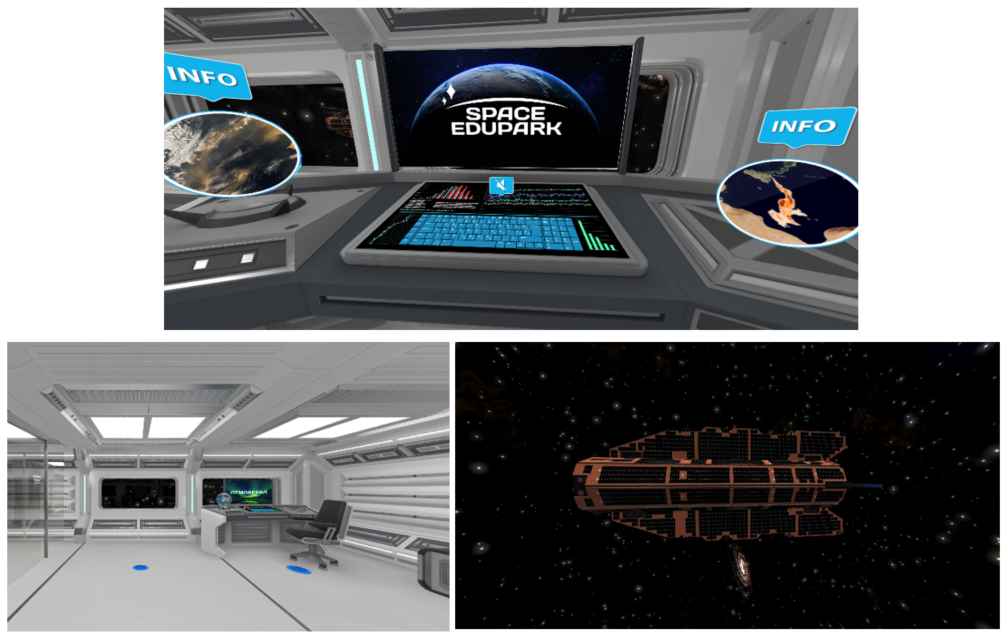
Users and their needs
The proposed solution impact the following Italian user communities:
- Science lower-secondary school teachers: Need support to daily learning activities and a platform to keep students more engaged when learning remotely. We developed an intuitive platform for distance learning in which we provide integrative paths for science education using ESA assets and in-App AR/VR experiences included in a gamified environment set-up to support pedagogical innovation and realise the flipped classrooms model. We support the innovation of the educational model by integrating effective and engaging distance learning solutions.
- Lower secondary school students: Need learning by doing and engaging and motivation-driven processes (Gamification), but also a strong support to social interaction and social aggregation to avoid isolation feelings. We propose a gamified platform to maximise engagement and learning by playing experiences through the AR/VR App. We also propose competition and team challenges to boost social aggregation. Thanks to gaming, gamification and simulation logics, students’ motivation and engagement is brought very high! Social aggregation in encouraged the emotional and cognitive dimensions of the students are strongly impacted. The system is designed to manage asynchronous activities and educational content; it is not an alternative to lessons, but an extraordinarily innovative way to stimulate individual study for pupils. It is therefore a way to complement the study of traditional paper textbooks.
- Lower secondary Headmasters of the Schools: Need a guide towards the flipped classroom approach, also in a digital environment that is designed to better dialogue with the digital natives and assure a monitoring of the activity of both students and teachers. Finally, the digital environment that hosts remote learning activity also provides a solid system to assess the learning achievements.
Service/ system concept
The starting point of our project is the gamified e-learning platform, already in use in the business sector, accessible via web from PC and mobile, which is based on a user portal - to be customised - and the back-end component. The user portal is organised into two sections: on one side the education path is proposed, while on the other side the progress level achieved is shown to the user. While an education path is going on in the user portal, the back-end monitors and records the student level of learning and analyses, in real time, the education gap that may come up. With the same logic, a test or an assessment process can be done in the front end of the platform. The students’ progress feedbacks are provided in form of levels, awards, badges and open badges, to increase student’s motivation to learn and to achieve long term memorizations of the learning contents.
The platform front-end was developed with the utmost respect for usability and accessibility principles, focusing on the user, as the focal point of the system. The user interface has been created through a Single Page Application (SPA) and it is totally client-side, designed to make interactions as smooth and fast as possible and it was developed using Angular JS, Typescript and Bootstrap technologies. The back-office has a J2EE and proprietary relational database (SQL Server / PostgreSQL). AR/VR technologies are used to enhance the content of the learning path. AR/VR solutions have been developed as a standalone APP, developed in Unity 3D / AR Foundation, to be downloaded via the App stores, for Android and iOS devices. The AR/VR App syncs data with the e-learning portal, so the teacher can follow the progress of students. Both platforms use standard protocols to talk with each other.
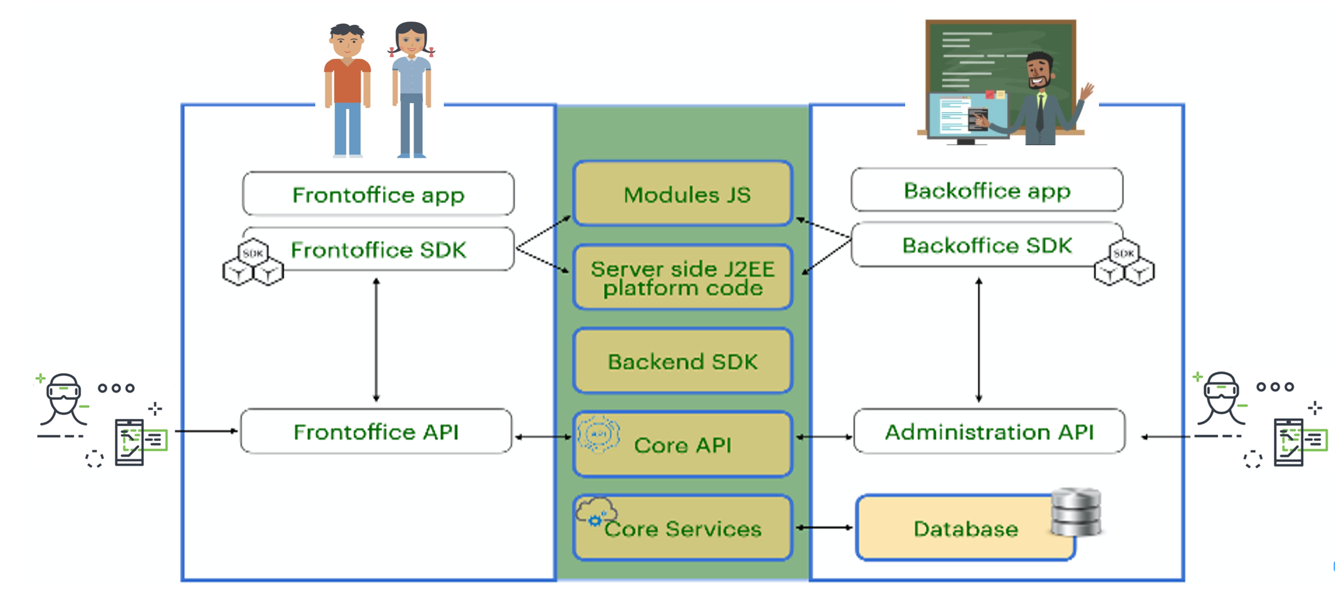
Space Added Value
Earth Observation data is going to integrate students’ Earth science curricula allowing them to develop specific competences such as:
- Observe, analyse and describe phenomena belonging to natural reality and aspects of daily life, formulate hypotheses and verify them, using simple schemes and modelling;
- Recognise the main interactions between the natural world and the human community, identifying some problems of anthropic intervention;
- Use the wealth of knowledge acquired to understand current scientific issues and to adopt responsible behaviour.
We integrate data obtained from the satellites of the Copernicus, EUMETSAT and Earth Explorer programs and the multimedia contents of the ESA Φ Experience (based in ESA / ESRIN) in the original educational contents that are produced for this project.
Current Status
The pilot phase with the 4 selected schools started in May and closed on June 10th. Feedback from teachers, headmasters and students were collected on the go during the pilot to address potential bugs. At the end of the pilot, all participants have completed a customized survey (for student, teachers and headmasters) structured to collect their feedback on the different planned KPIs and produce analytic reports.
Those results will serve as a basis for next development of the learning content and to drive optimization in the user experience related to both the platform and the App. With this goal in mind, the AR/VR App already includes a couple of AR/3D experiences related to the next learning topics (Atmosphere and Solar System) to serve as a teaser for future enhancements, while the VR exploratory experience plays around Biosphere, Atmosphere, Litosphere and Hydrosphere enabling students to interact with videos, images and 3D objects.




